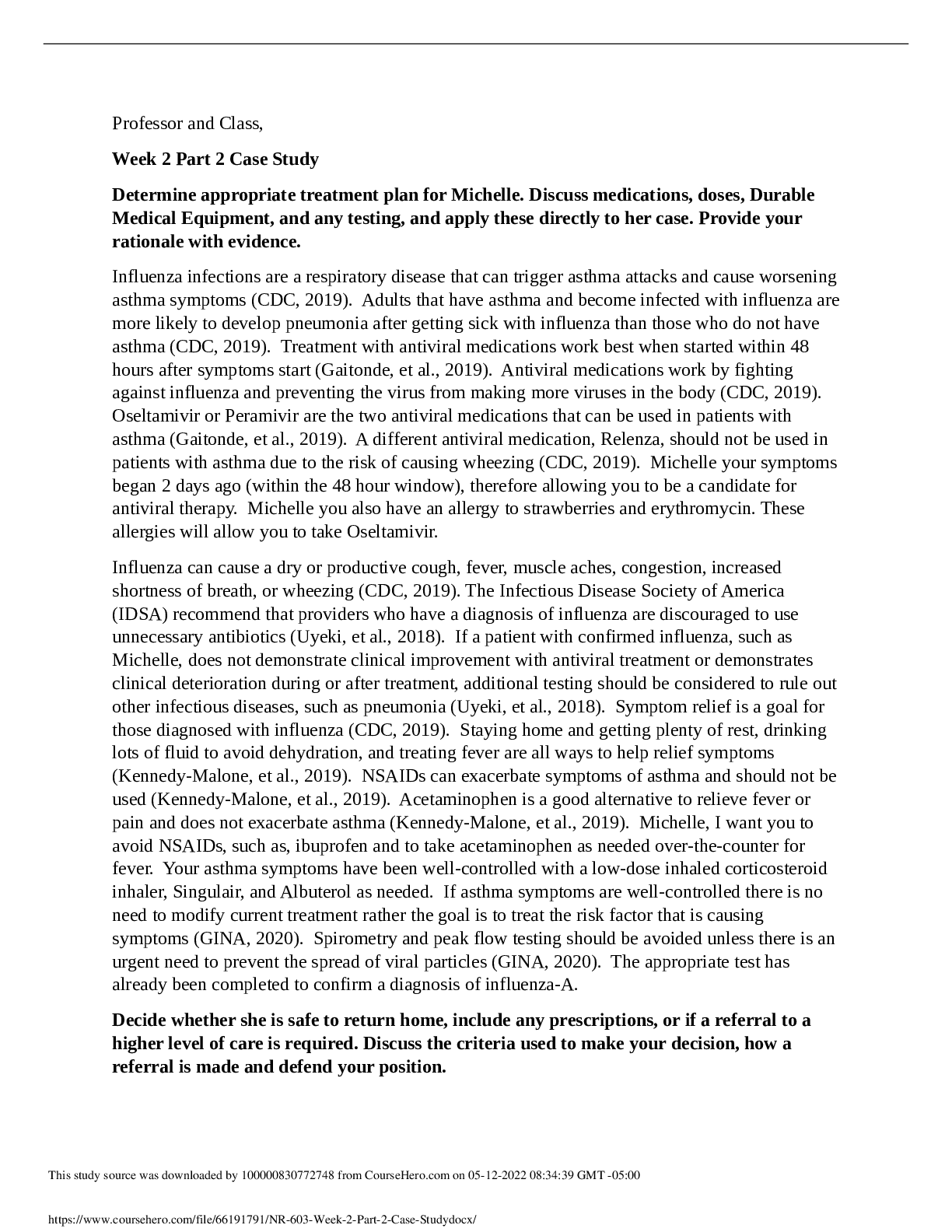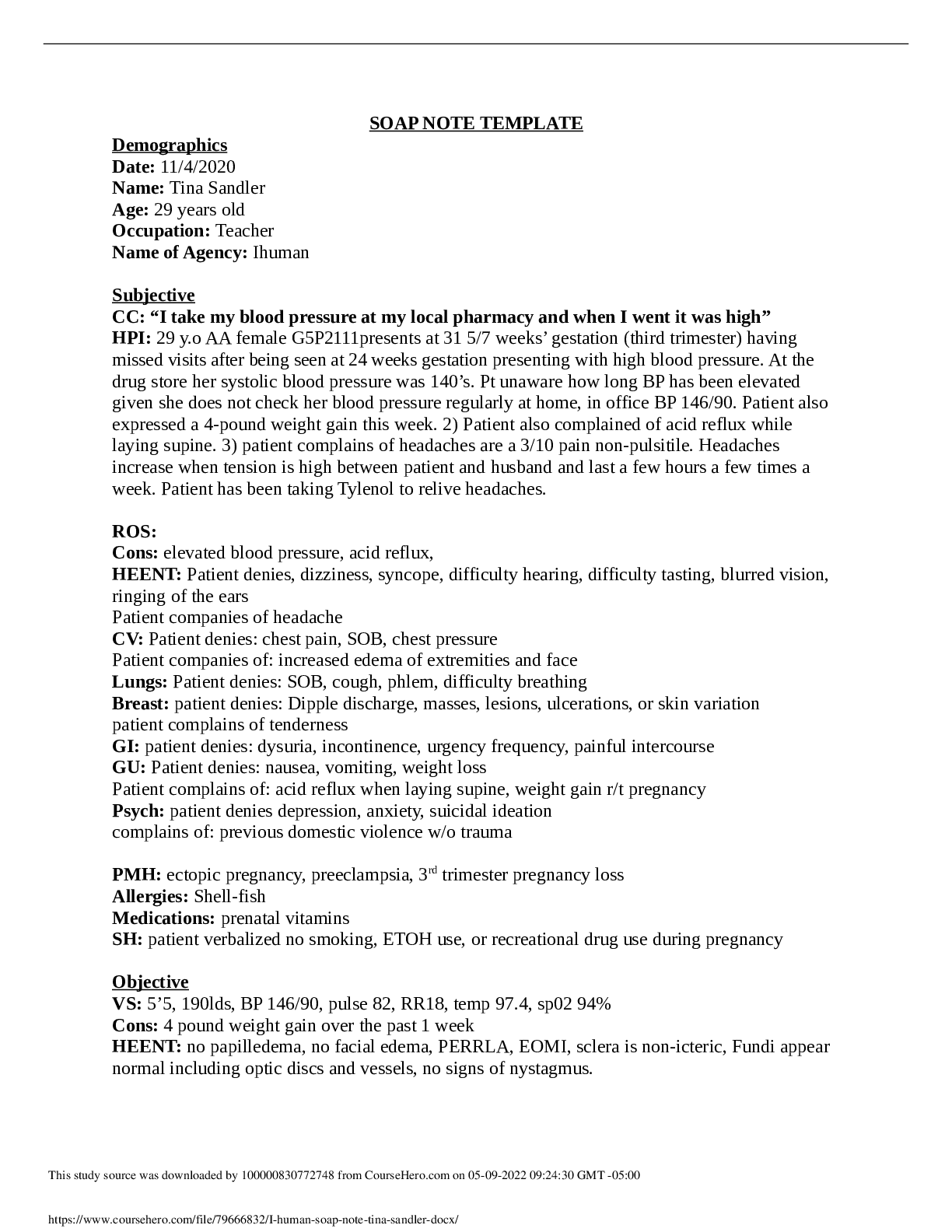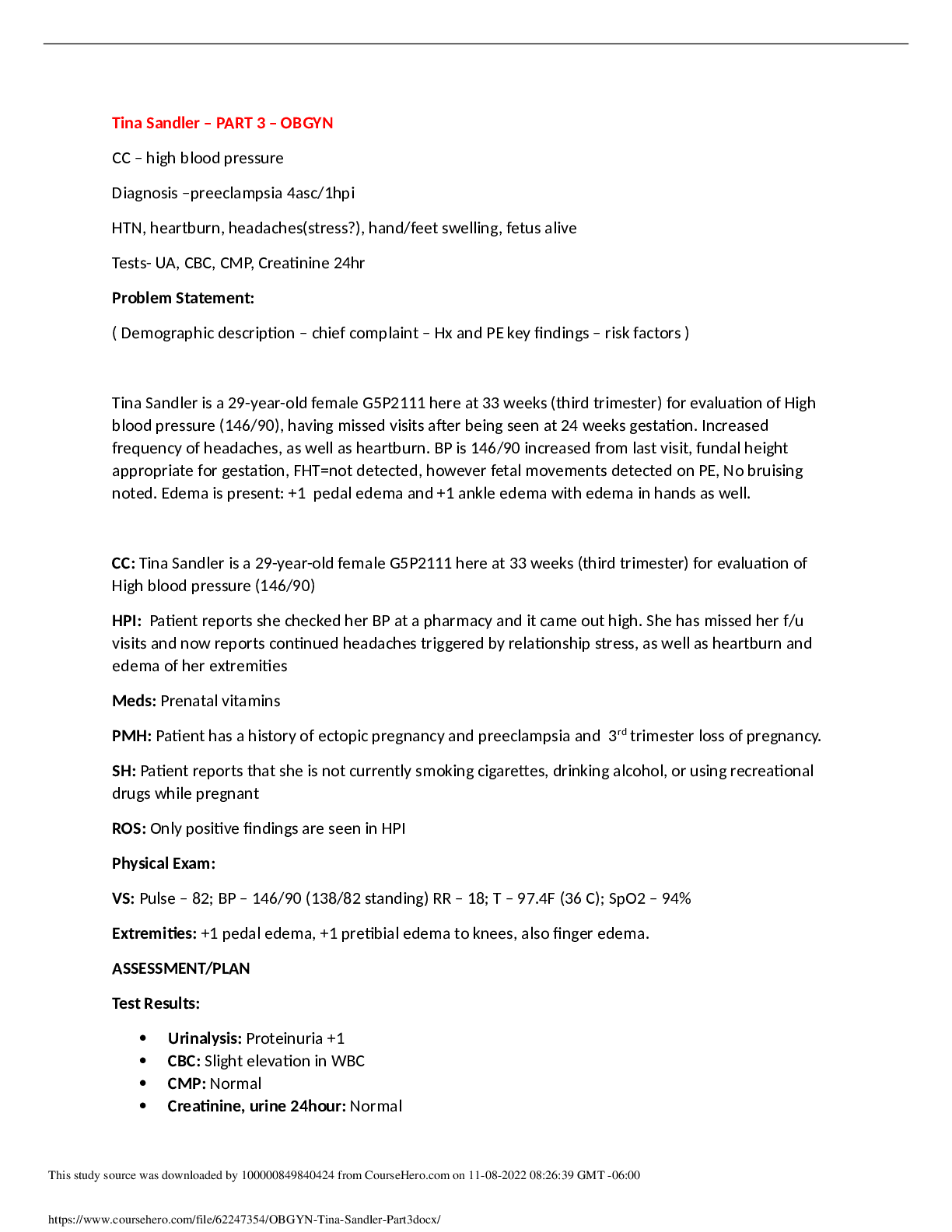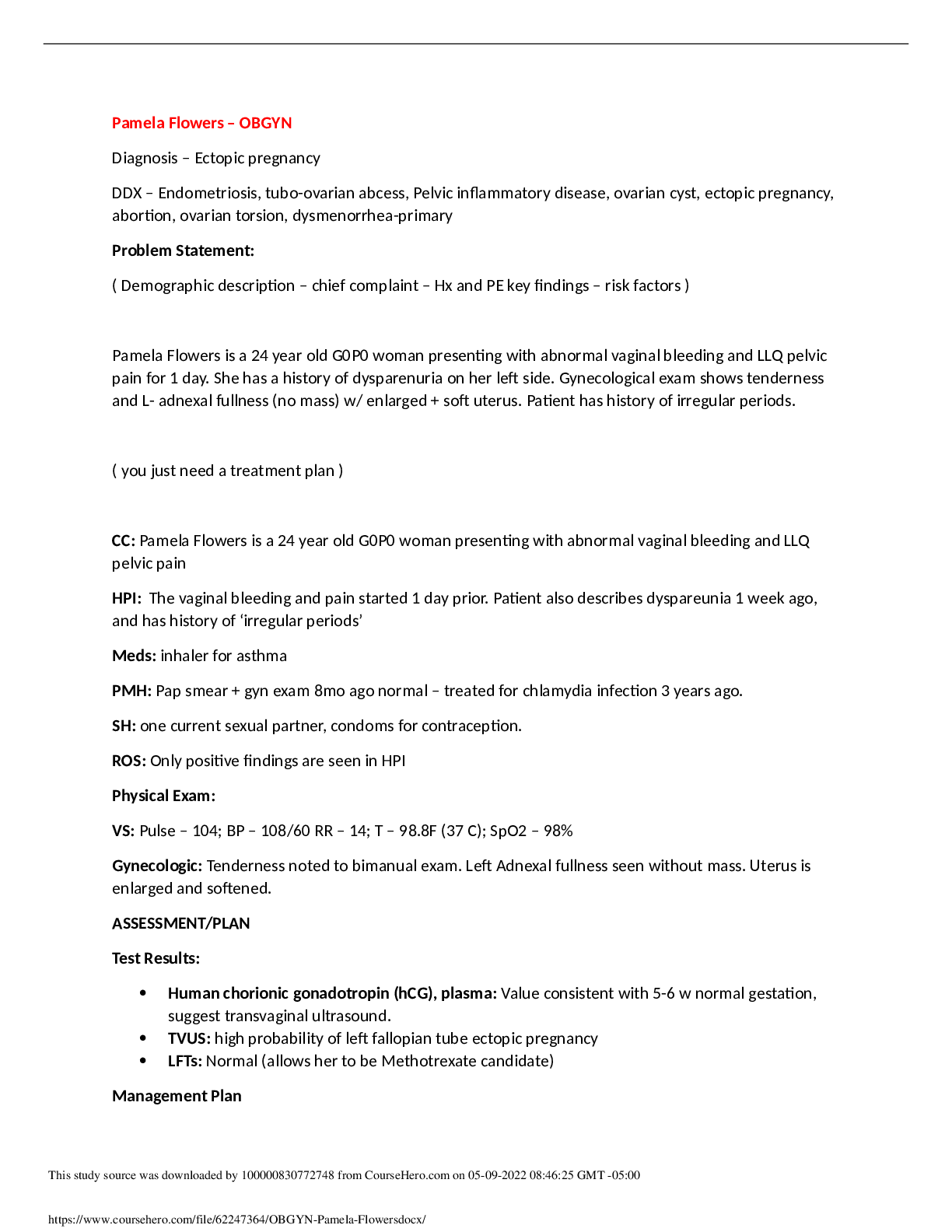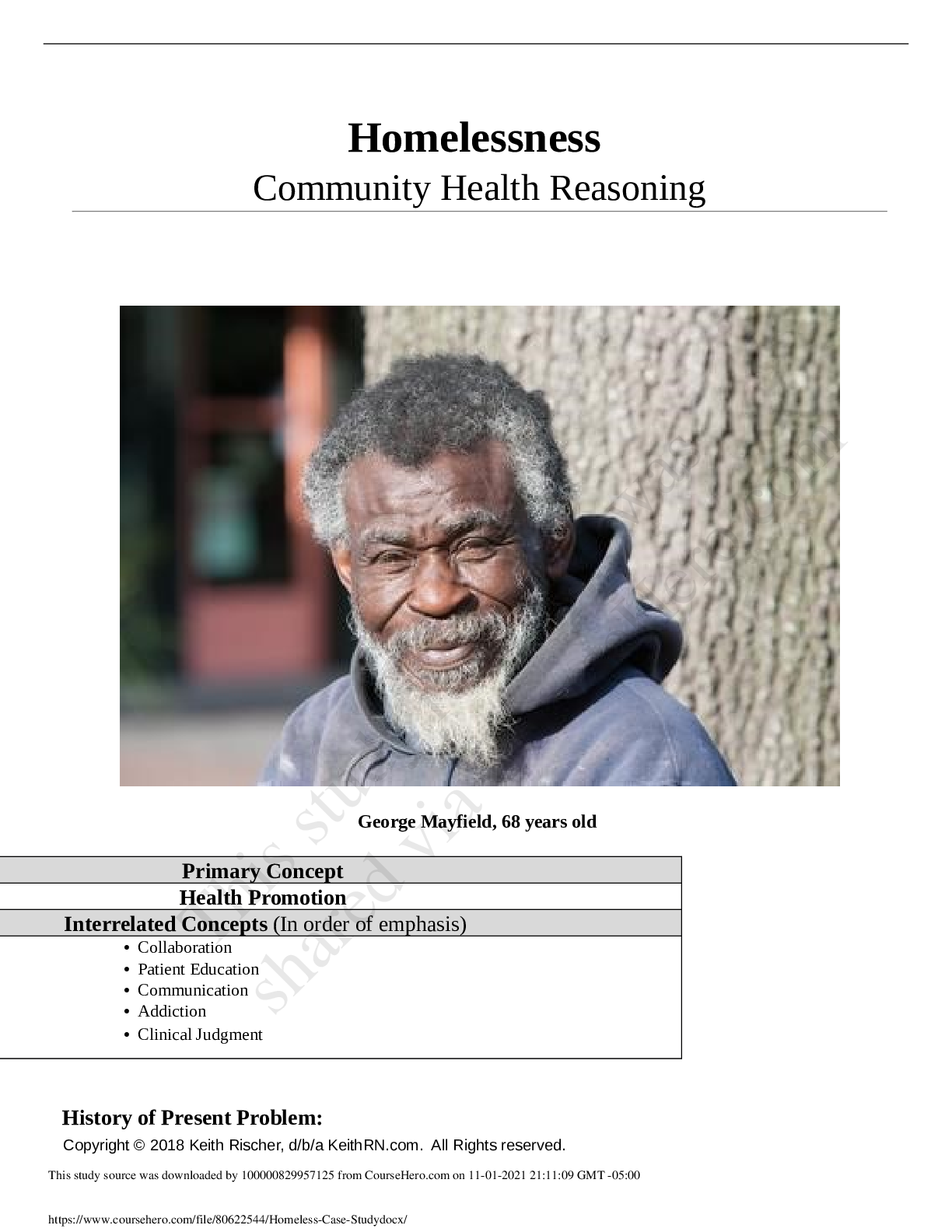*NURSING > CASE STUDY > NURSE Dilemma Student Burnout STUDENT Worksheet case study (All)
NURSE Dilemma Student Burnout STUDENT Worksheet case study
Document Content and Description Below
Resolving the Dilemma 1. Identifying data that is RELEVANT, what is the essence of this current dilemma? Relevant data in this situation is the patient is a nursing student and as she has told us sh... e is under a lot of stress with her schooling, neglecting church and friends/family. She’s experiencing burnout and it’s causing her to become irritable, feeling helpless, fatigue and over all exhausted. 2. What additional information is needed by the nurse that would help clarify the current dilemma? Patients eating habits, exercise, sleep. We would also want to ask for any current medications, additional stressors and coping methods. Clarify with Susan is she has history of depression or mental health issues. 3. What additional members of the educational team could be used in this situation? Why? Instructors play a significant role because they want to see their students succeed and will help us find solutions to our problems. This is why it’s important to communicate how you are feeling or what you are dealing with so you can be connected with the proper resources, potentially within the school. 4. What is the student priority? I feel the student priority is to focus on self-care and her health habits such as eating and exercise. I also feel student should reduce her work schedule is her financial means allow so. We can later talk about time management skills and trying to make time for church whether it be online or in person, and making time with her family even something as small as dinner time. 5. What interventions and/or principles can be utilized by the student to successfully resolve this clinical dilemma? Susan and I will discuss healthy eating habits, exercising even if it’s just for 15-30 minutes, setting time aside to spend with loved ones and especially reducing work hours if possible. I feel the workload of 30 hours each week is extremely stressful for Susan and cutting those in half could make the difference she needs to catch up and be where she wants to be with her school grades, church and her loved ones. 6. What is the expected response of the student that would indicate the interventions were effective? I expect the patient to verbalize some healthy habits she learned today while in her visit. Susan shows a positive attitude and states she is looking forward to making these changes. 7. What response by the student would indicate that additional interventions are needed? Susan states “I will just stop at McDonald’s for meals so I don’t have to cook anymore” the pt thinks this will save her time but these fast food meals will ultimately take more of a toll on her. I will further educate on healthy eating habits. 8. What is the student likely experiencing/feeling right now in this situation? Susan is likely feeling isolated, like a failure, helpless, overly stressed etc. She’s here because she needs guidance and wants to find a resolution. 9. What are some practical self-care strategies you could implement to minimize or put out the potential fire of burnout while a student? I could do better in a lot of ways. I would like to start exercising, eating healthier and focusing more on my overall mental health. Nursing school is hard and organization and prioritization is key. We can do this! Nursing Plan of Care (please refer to rubric when completing this form) Patient Initials: Objective Cluster Data (for this problem) Subjective Cluster Data (for this problem) fatigue Feels helpless Mentally exhausted Physically exhausted Irritable. This study source was downloaded by 100000830772748 from CourseHero.com on 10-28-2021 09:38:01 GMT -05:00 https://www.coursehero.com/file/72164254/clinicals-day-6docx/ This study resource was shared via CourseHero.com Nursing Problem (Diagnosis) #1 anxiety r/t feelings of helplessness as evidence by susan having a breakdown and crying. Goals (List one short term and one long term goal) STG: patient will verbalize anxiety self control skills before leaving today. STG Interventions (List 3, with rationales & citation) 1. assess the client of anxiety and physical reactions to anxiety. This will help in using appropriate communication skills to identify and manage this issue. 2. use empathy to encourage the client to interpret the anxiety symptoms as normal. The way a nurse interacts with the patient influences his or her quality of life. 3. encourage the client to use positive self talk. Self talk strengthens behavioral performance and prospective behavioral intentions. [Show More]
Last updated: 2 years ago
Preview 1 out of 5 pages

Buy this document to get the full access instantly
Instant Download Access after purchase
Buy NowInstant download
We Accept:

Reviews( 0 )
$7.00
Can't find what you want? Try our AI powered Search
Document information
Connected school, study & course
About the document
Uploaded On
Oct 28, 2021
Number of pages
5
Written in
Additional information
This document has been written for:
Uploaded
Oct 28, 2021
Downloads
0
Views
129


 (1).png)





